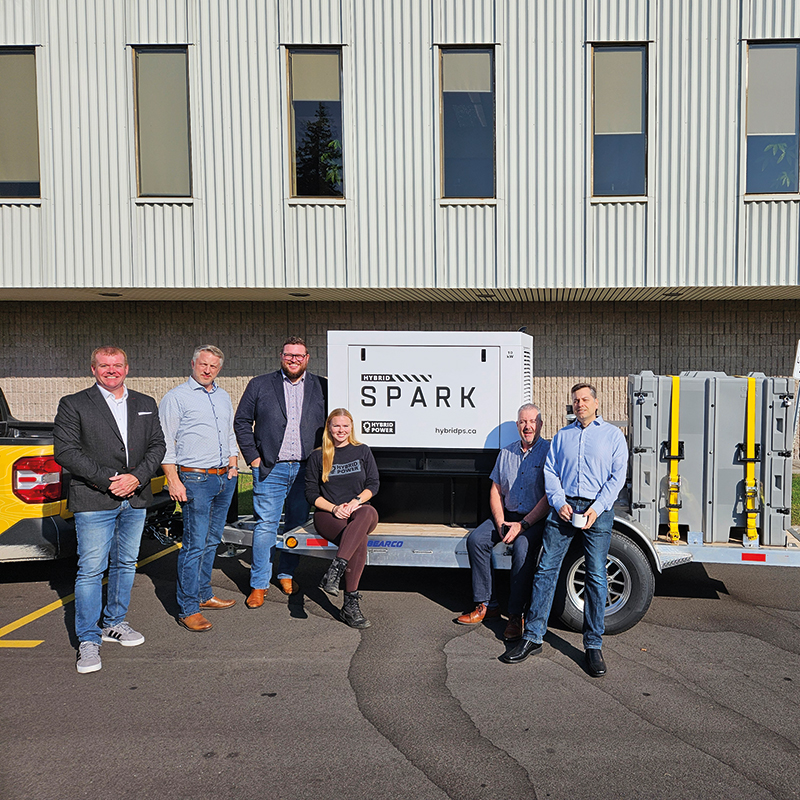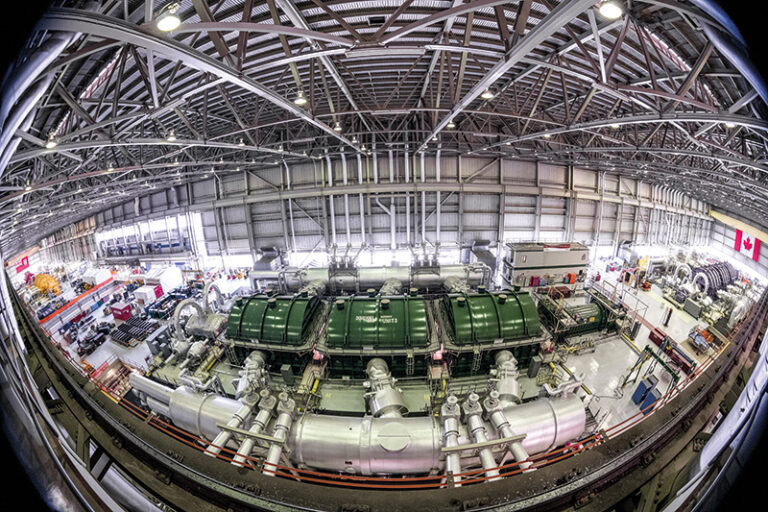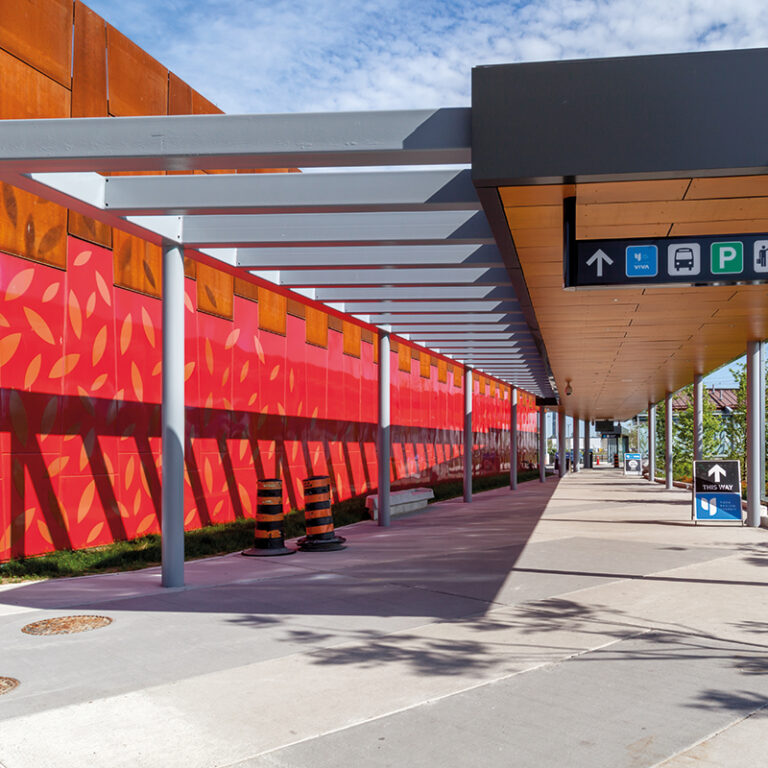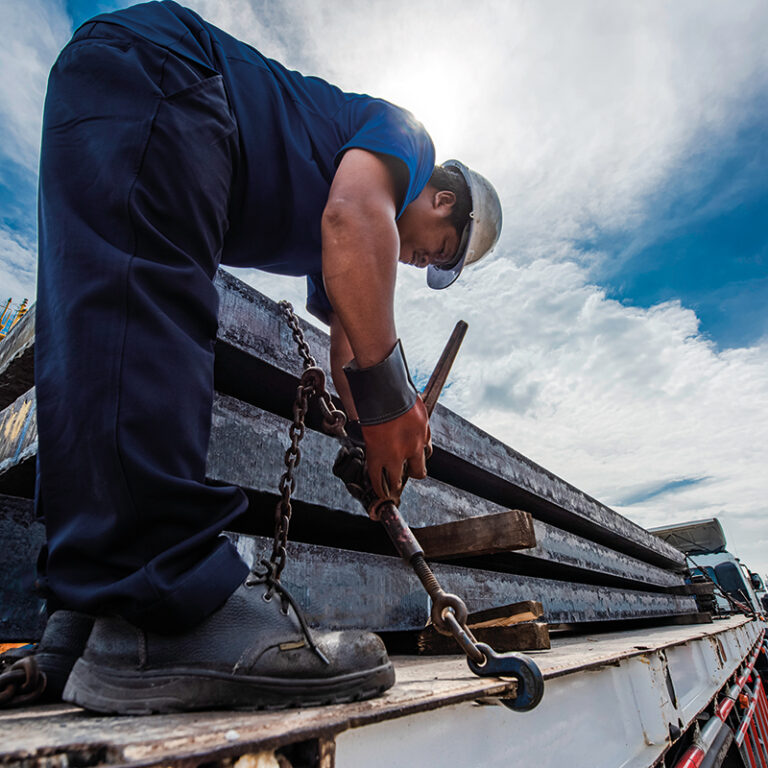By Angela Gismondi
EllisDon is piloting a hybrid battery solution in an effort to help reduce GHG emissions on jobsites and meet net zero targets.
Traditionally construction sites rely on diesel generators to power projects. In response to the firm’s Impact Report, a comprehensive annual report that highlights the company’s mission to address important environmental, social and governance, the team began exploring cleaner alternatives to using traditional diesel generators on project sites.
The report confirms EllisDon’s corporate commitment to be net zero by 2050 in alignment with the government targets, with an interim milestone of a 42 per cent reduction by 2030, explained Lee Hyland, construction manager at EllisDon.
It’s no secret that the construction industry is a significant contributor to Canada’s GHG emissions.
“Our emissions profile showed that nearly 55 per cent of our total emissions were fuel burning on site, which makes sense from a construction standpoint,” said Hyland, who has been instrumental in piloting the alternative power technology. “We started exploring different options and really looking around the industry and kicking the tires. One of the things we started looking at was what if we had a battery-based system that we could couple with a solar array to help recharge and then maybe a small diesel generator or a small energy source to top it up.”
Hybrid solution sparks innovation
EllisDon’s Ottawa team, supported by Sustainable Building Solutions (SBS), approached Hybrid Power Solutions to procure hybrid generators to power its construction infrastructure on site.
“We looked at a number of different options for the recharging source other than solar,” said Hyland, adding other temporary power solutions in the marketplace include natural gas generators, wind-powered generators and hydrogen fuel cells. “But at the end of the day we wanted it to be a portable solution that we could basically move site to site or that could be deployed in a remote area where maybe a utility service is not available. So, we ended up going with a small diesel generator.”
The Spark generators consist of a 24-kW battery connected to a 12×340-Watt solar panel, which charges the battery and powers the infrastructure. A small diesel generator acts as a backup/top-up for the battery when solar can’t meet the entire demand.
“We’re not inventing this technology,” Hyland pointed out. “We’re trying to utilize the technology that’s out there and come up with how do we apply it to our business model to help meet our net zero targets. That’s really what it comes down to.”
EllisDon deployed the technology at one of its sites in Ottawa in September and is now doing some beta testing and working out some of the bugs.
“One of the reasons Ottawa was very interested in this is because we have a lot of big sky available to us,” said Hyland. “It’s not a huge built-up city with a whole bunch of high rises, it’s not tightly condensed. We have the opportunity to use the solar power, use the batteries.”
That’s not to say that the technology can’t be used in a high-density location, he added.
“We’re exploring just using the battery to support large physical loads like a tower crane, for example,” he said.
Emission reduction of 60 per cent anticipated
The hybrid battery solution is expected to save up to 1,333L of diesel per month, $2,800 per month and 3,600kg of carbon per month, compared to an equivalent diesel generator. The solution is expected to reduce emissions by at least 60 per cent.
“Most of it is a predictive model right now,” said Hyland. “We’re trying to get a year’s worth of data under our belts so we can start analyzing it. First of all, we’d like a 12-month profile. It’s obviously dependent on the load that we’re putting on the battery and the weather patterns. There are a lot of variables, but our predictive model is we’re hoping to see a 60 per cent reduction in diesel consumption.”
It is anticipated the system will provide cost savings, he added.
“If the battery system is going to last us 10 years, our return on investment should be much, much less than that,” Hyland noted.
One of the benefits of the small generator and battery combination is it allows the generator to cycle on and off at full capacity, producing much more efficient combustion and energy production. The system is capable of recharging through both the smaller generator and solar panels to drastically reduce emissions during the initial phases of the project.
“The benefit behind it is that a diesel generator will just run at a minimum no matter what the load is on it,” Hyland noted. “It could have no load on it whatsoever but might just keep running at 30 per cent. A battery doesn’t do that. It only discharges what is taken from it. Then the solar is the first point of recharge of the battery.”
Generators often run continuously at partial load, which is very inefficient, Hyland noted.
“The idea behind it is that if we had a 20kW diesel generator deployed on the site it would just be constantly running, burning diesel, so that’s the cost of the diesel plus the emissions that were releasing,” said Hyland.
“What this model allows us to do is have the battery as the primary source of discharged power that we require for temporary lights and chargers, all the things we would run a generator for.”
One of the challenges with the system is that it depends on the weather, particularly the amount of sunlight required to charge the solar panels, which varies at different times throughout the year.
“If we get a couple of cloudy days, November to January are dark months for us, then the diesel will kick in and top up the battery,” said Hyland. “It’s only using the diesel for a short term which will reduce our diesel consumption and our emissions on that unit for the same size equivalent of a full diesel generator.”
Technology helps cut GHGs
There is currently a big push for electrification in the industry and beyond.
“Our primary target right now is to bring our emissions down to help meet our net zero targets, but it also helps systems across the line,” said Hyland. “If some of the projects happen to have any green incentives associated with them, we’re demonstrating that were burning less diesel and reducing greenhouse gases on those sites.”
This is just one of the initiatives the company is exploring to meet its net zero target.
“I think this is the first of many to come,” said Hyland. “Is this the final solution? I think this is the first solution and we’re going to continue to evolve as the technology evolves hopefully it gets better and better, and emissions continue to drop.”
Angela Gismondi is a journalist with over 20 years of experience. She has spent the last eight years writing content for the Canadian construction industry.
[This article appeared in the March/April 2025 issue of ReNew Canada.]
Feature image: The Spark generators consist of a 24-kW battery connecteto a 12×340-Watt solar panel, which charges the battery and powers the infrastructure. A small diesel generator acts as a backup/top-up for the battery when solar can’t meet the entire demand.











